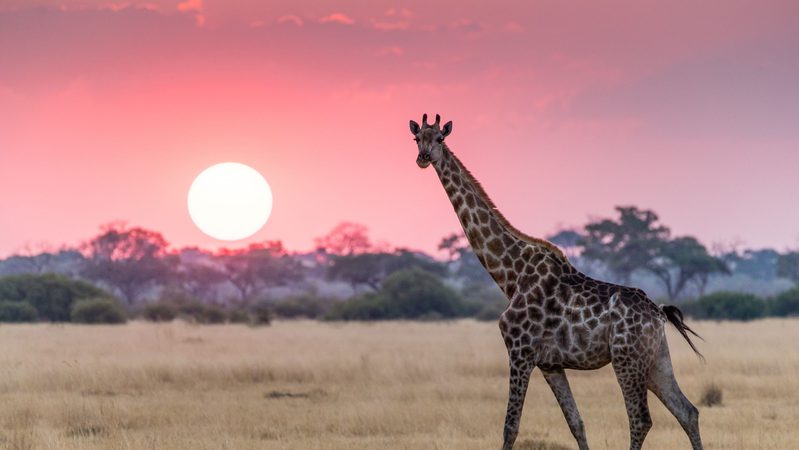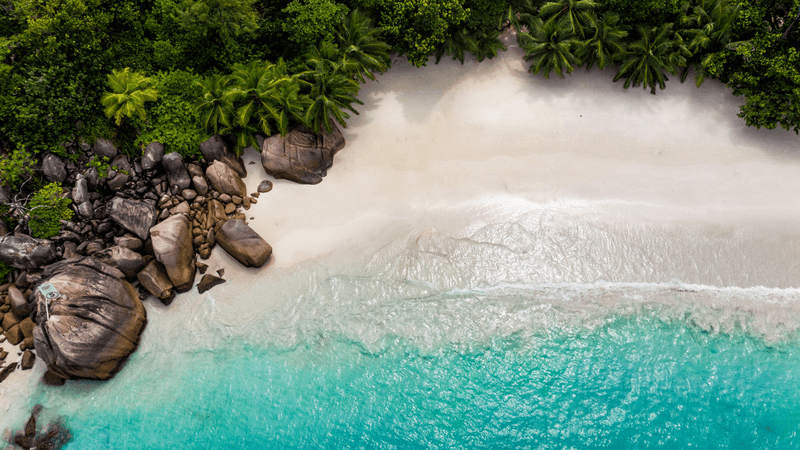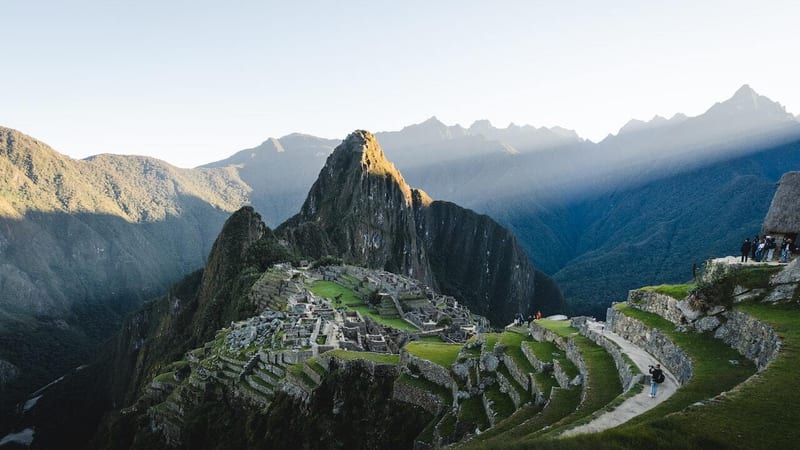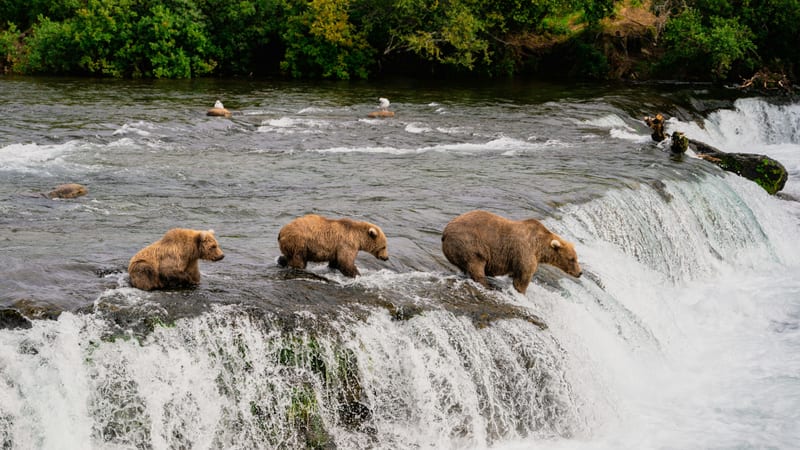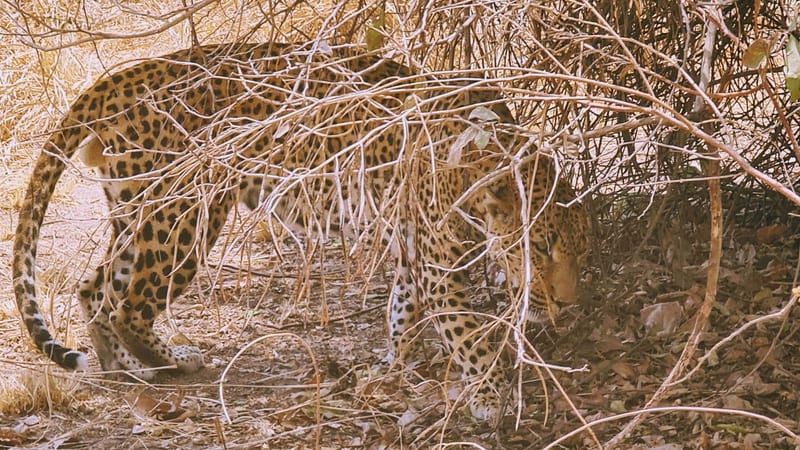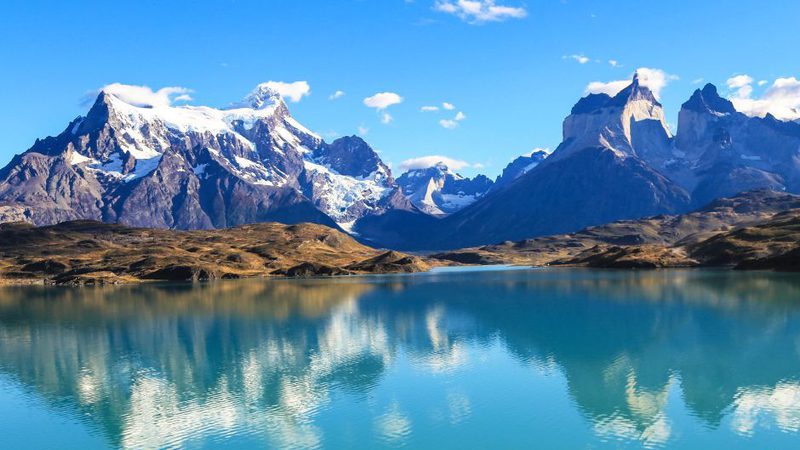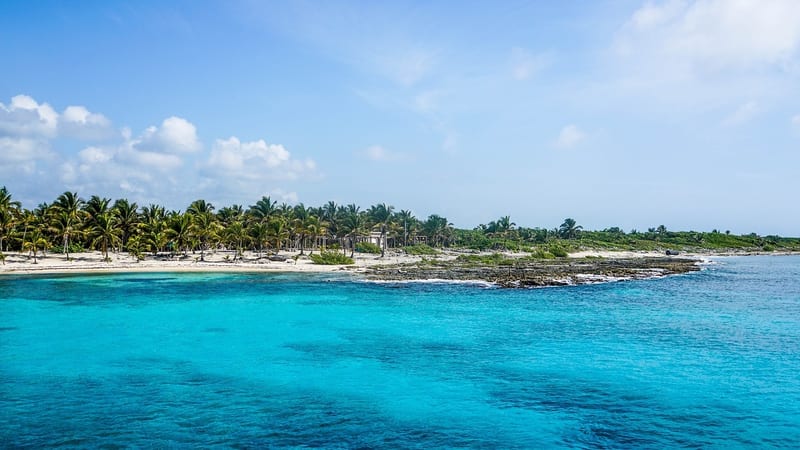
Setting the Stage
St Helena a remote volcanic tropical island situated in the South Atlantic Ocean is famous as the site of the end of Napoleon’s life. But how did he come to be there and what did he do on the island?
Napoleon Bonaparte's meteoric rise to power marked a pivotal era in European history. Born in Corsica in 1769, he swiftly climbed the military ranks during the French Revolution, culminating in his appointment as First Consul in 1799. A master tactician and charismatic leader, Napoleon strategically expanded his influence, eventually proclaiming himself Emperor in 1804. However, his ambitions faced a dramatic halt with the Battle of Waterloo in 1815, leading to his abdication and subsequent exile.
Napoleon's ascent was fuelled by military brilliance, political acumen, and a keen understanding of public sentiment. His victories in Italy and Egypt showcased his strategic prowess, earning him widespread acclaim. The political chaos of the French Revolution provided the perfect backdrop for his rise, allowing him to consolidate power and reshape France's political landscape.


The defeat at Waterloo marked the beginning of Napoleon's downfall. The forces allied against him, comprised a coalition of European powers that opposed him including the United Kingdom, the Netherlands, Hanover, and various other German states, all led by the Duke of Wellington, and the Prussian forces commanded by Gebhard Leberecht von Blücher, were determined to prevent further instability, and decided on his exile. However, rather than imprison him in a fortress, they selected the remote island of St Helena. The choice of St Helena as his place of exile was not arbitrary; it foreshadowed the isolation and challenges that would define the final chapter of Napoleon's life.
St Helena, a British outpost in the South Atlantic, would become the stage for Napoleon's last act. Its geographic isolation hinted at the intentional removal of Napoleon from the European political stage, setting the scene for a unique and historically significant chapter in the life of the fallen emperor.
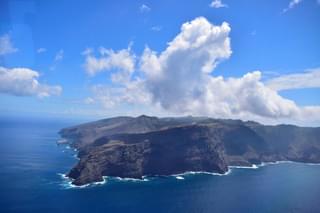
Exile to the South Atlantic
The Battle of Waterloo in 1815 proved to be the watershed moment that altered the course of Napoleon's destiny. Defeated by the allied forces, he abdicated the throne and faced political exile. The victorious allies, wary of the charismatic leader's potential to instigate further unrest, sought a solution that would both neutralize his influence and keep him far from the European mainland.
St Helena offered a natural fortress. Its isolation, surrounded by vast expanses of open sea, made it an ideal location to confine Napoleon securely. The island's rugged topography and lack of navigable ports added an extra layer of geographical defence against any potential rescue or escape attempts. St Helena's remoteness served the dual purpose of ensuring Napoleon's physical isolation and symbolically removing him from the European theatre of power.
Napoleon, upon learning of his destination, reportedly expressed a mix of frustration and resignation. The realization that he would be confined to a small, isolated island in the vast Atlantic undoubtedly signalled the end of his grandeur and added a poignant note to his legacy.
Nowadays, the features of the remote, tropical island that made it an ideal fortress in Napoleon's lifetime make St Helena a unique holiday destination. Its relative isolation and location in the South Atlantic make it a great spot for hiking, wildlife spotting (an excellent place for seeing dolphins and whale sharks, for example), sailing, fishing, and exploring. The temperate weather combined with the varied mixture of natural and cultural activities are an inviting combination. Read more about what you can do on St Helena on our blog - Top 16 things to do on St Helena.

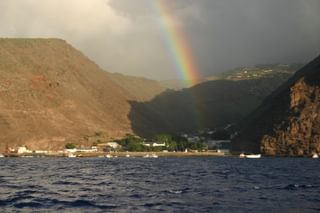
Getting there
The journey to St Helena posed considerable challenges. The isolation of the island meant limited accessibility, making the transportation of personnel and supplies challenging. Harsh sea conditions, coupled with logistical difficulties, created a strenuous and arduous voyage, setting the stage for the unique circumstances that would characterize Napoleon's exile on St Helena.
Napoleon eventually arrived on St Helena with his entourage on 15 October 1815, commenting on his arrival “It is not an attractive place, I should have done better to remain in Egypt”. His initial indifference to the island was a theme that would run throughout the years he spent on the island, despite the leniencies afforded him by British.
A large crowd gathered to greet the Emperor’s arrival but, keen to avoid creating a scene, it was decided he would be brought ashore under the cover of darkness and taken to his temporary residence. After just one night at the home of Henry Porteous in Jamestown, Napoleon’s petulance declared the house to be unfit for him and his 26 companions.
These days, the journey to St Helena is still not easy, but certainly easier than Napoleon’s. Depending on the time of year flights operate once weekly (sometimes multiple times week) from Johannesburg, South Africa to St Helena – a marked difference from a multi-week boat ride! Learn more about the best time to visit St Helena.
That said, if you are keen to reach St Helena by boat, check out our Atlantic Odyssey trip, which takes you from South America all the way across the Atlantic to St Helena.

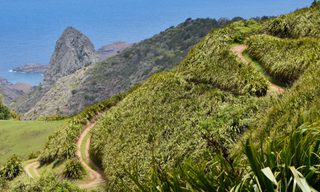
The following day, in the company of Sir George Cockburn and General Bertrand, Napoleon rode out to Great Longwood which would become his eventual permanent residence on St Helena. Whilst required improvements took place, he was billeted in a guest cottage a Briars Village, home of the Balcombe family for 2 months. The guest and hosts became firm friends during this short time, and it seems this wasby far the most convivial time he spent on St Helena. It was, with great sadness, in December of 1815 that he bid farewell to the Balcombes to take up residence at Great Longwood.
Originally a cowshed, Great Longwood was a five-bedroom home when Napoleon arrived on the island, with a sixth room – used as a billiard room – added prior to his moving in. Despite the apparent space, living here was a cramped affair – remember almost 30 staff made up his entourage.
The island's climate is subtropical, marked by consistent trade winds. The lush landscape, with diverse flora and fauna, contrasts sharply with its barren, rocky areas. St Helena's diverse geography provided Napoleon with both breathtaking scenery and an inhospitable backdrop, encapsulating the paradox of his secluded existence.
Boasting a seemingly idyllic location for those making brief visits, Longwood suffers from the extremes of climatic conditions on St Helena – extreme heat during the summer and damp mists during winter. Marry these challenges to the limits the British placed on independent movements by Napoleon and it is clear to see why he was unhappy during his time here.
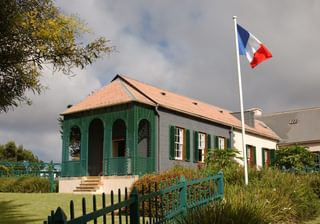
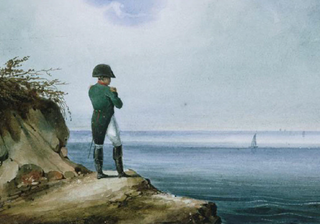
Despite his exile, Napoleon was not imprisoned within Longwood House. Allowed to move independently in a designated area around the property, with the company of an officer required beyond that, he sought to constantly outwit his guards and roam further than allowed. His guards were as frustrated with his actions as he was with the situation, so it was no surprise that upon his arrival in April 1816, the new Governor, Hudson Lowe, tightened the restrictions on the Emperor. Indeed, one of these restrictions was to forbid the use of said title, a strict curfew between sunset and sunrise imposed and a large reduction in the area he was allowed to explore unaccompanied. Through their shared time on the island, the animosity between Napoleon and Lowe was clear for all to see
You can see Longwood House and the home of the governor, Plantation house, as well as various locations that Napoleon would frequent on the island on our St Helena - Secret of the South Atlantic trip.

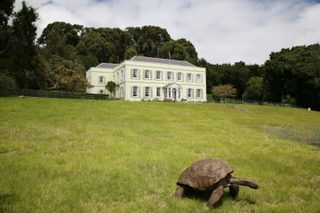
Continued European Influence
St Helena wasn’t enough to contain Napoleon’s influence after all though. Despite his exile on St Helena, he remained a potent figure in European politics through prolific correspondence. He engaged in extensive letter writing, communicating with sympathizers, former allies, and family members. These letters, often smuggled off the island, allowed Napoleon to exert a subtle but persistent influence on political discussions.
Napoleon's continued presence loomed large over European politics. The debates surrounding his exile, potential escape, or even a return to power were recurrent themes among political circles. The fear of Bonapartist resurgence influenced the decisions of European leaders and contributed to the shaping of post-Napoleonic policies.
Media coverage of Napoleon's exile was extensive, both in France and abroad. Newspapers reported on his daily life, his letters, and the ongoing debates about the legitimacy of his confinement. Public opinion varied, with some sympathizing with the fallen emperor, viewing him as a victim of political machinations, while others celebrated his removal as a necessary step for stability.
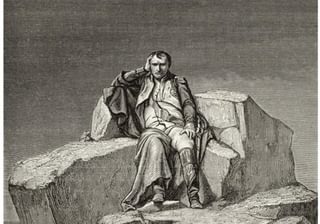
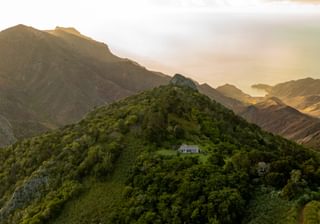
The spectre of Napoleon's return prompted adjustments in alliances among European powers. Nations sought to maintain a delicate balance, wary of potential upheavals. The post-Napoleonic era witnessed shifting diplomatic landscapes as countries navigated the complexities of power dynamics and the persistent influence of Napoleon's legacy.
Napoleon's exile on St Helena marked the end of an epoch, but his impact endured. The Napoleonic Code, his administrative reforms, and the memory of his military campaigns continued to shape European history. The ideological and political changes brought about by Napoleon left an indelible imprint on the continent, influencing future generations and contributing to the evolution of modern European states.
Napoleon's continued impact on the political activities of Europe is heavily speculated to have contributed to his lack of adequate medical care. The British Government was determined to maintain the appearance of looking after him (or at least not killing him so as to make him a martyr) to appease his remaining supporters but, they refused to believe any claims made by his doctors that he was ill, believing that Napoleon was using his health as an excuse to escape exile.
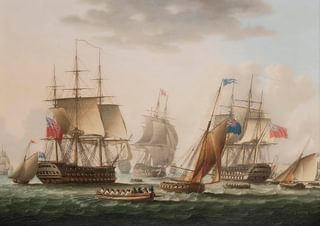
The death of Napoleon
1818 saw a marked deterioration in Napoleon’s condition, compounded by the restrictions placed on him, the fluctuating conditions at Great Longwood and the inevitable mental toll such an incarceration takes on a person. The situation came to a head on the 2 August 1818 when his personal doctor, Barry O’Meara, left St Helena due to long-held frustrations with the restrictions placed on him by Lowe, as well as the Governor’s attitude towards Napoleon. Indeed, it was some 6 months before another physician attended to him, but when his reports concurred with O’Meara’s previous findings, he was dismissed by court martial. Further Doctors and attendants were sent by his Mother, although the rigours of exile were too much for them and they departed seemingly as quickly as they arrived.
In 1820, after long periods of convalescence, it appeared there was an improvement in Napoleon’s condition, with plans laid to grow an extensive vegetable garden and citrus orchard. Added to this was a small pavilion area where he could gaze out to see and, for a short time, all seemed well with the exile.
Napoleon's upturn was short-lived, and he took his final ride from Great Longwood in October 1820. By the March of 1821, he was bedridden and finally, he succumbed on 5 May 1821, with his entourage all around him. The official cause of death was recorded as stomach cancer, and by all accounts, the doctors involved in his care reported findings that remain consistent with this theory - however, conspiracy theories claiming assassination did, and indeed do, still abound including poisoning by arsenic.
Befitting the control he exerted over all elements of his life, Napoleon chose where he would be buried on St Helena, the Sane Valley, where a simple, heavily guarded tomb marked his final resting place on the island. 25 years to the day from his arrival on St Helena his body was repatriated to France and laid to rest at the Esplanade des Invalides in Paris.

St Helena post-Napoleon
With Napoleon's death, the conditions of exile on St Helena underwent significant changes. The strict measures implemented during his captivity were gradually relaxed. His followers were allowed more freedom, and the island's strategic importance diminished. While St Helena remained a British possession, the intensity of surveillance and restrictions eased, signalling a symbolic end to the era of Napoleon's confinement.
Historians offer diverse perspectives on Napoleon's exile. Some emphasize the oppressive conditions imposed by the British authorities, portraying him as a victim of political manoeuvring. Others argue that his exile, though restrictive, allowed him intellectual and personal freedom, fostering his contributions to memoirs and writings. The debates among historians highlight the complexity of evaluating Napoleon's time on St Helena.


There are plenty of reminders of Napoleon's exile to St Helena still on the island. Longwood House where spent his final years is owned by the French Government and is one of the best Napoleonic museums in the world, with original furniture and over 900 artifacts. From here is just a 15-minute stroll to see Napoleon’s tomb and the beautiful heart-shaped waterfall.
You can also visit Fisher’s Valley where Napoleon rode his horse during his exile on the island.
Another significant event that occurred just ten years after Napoleon’s passing was the birth of the incredible Jonathon the tortoise – the world’s oldest living land animal. Hatched in 1832, Jonathon has lived on and around St Helena since his early fifties and still resides there today, clocking in at over 190 years old!


Wondering when to visit? Take a look at this guide on the best time to visit St Helena.
Take a look at our top things to do in St Helena.
Looking for some more inspiration? Take a look at our best safari holidays ideas, our favourite family safaris, our big five safari guide or our top African safari honeymoon suggestions.

